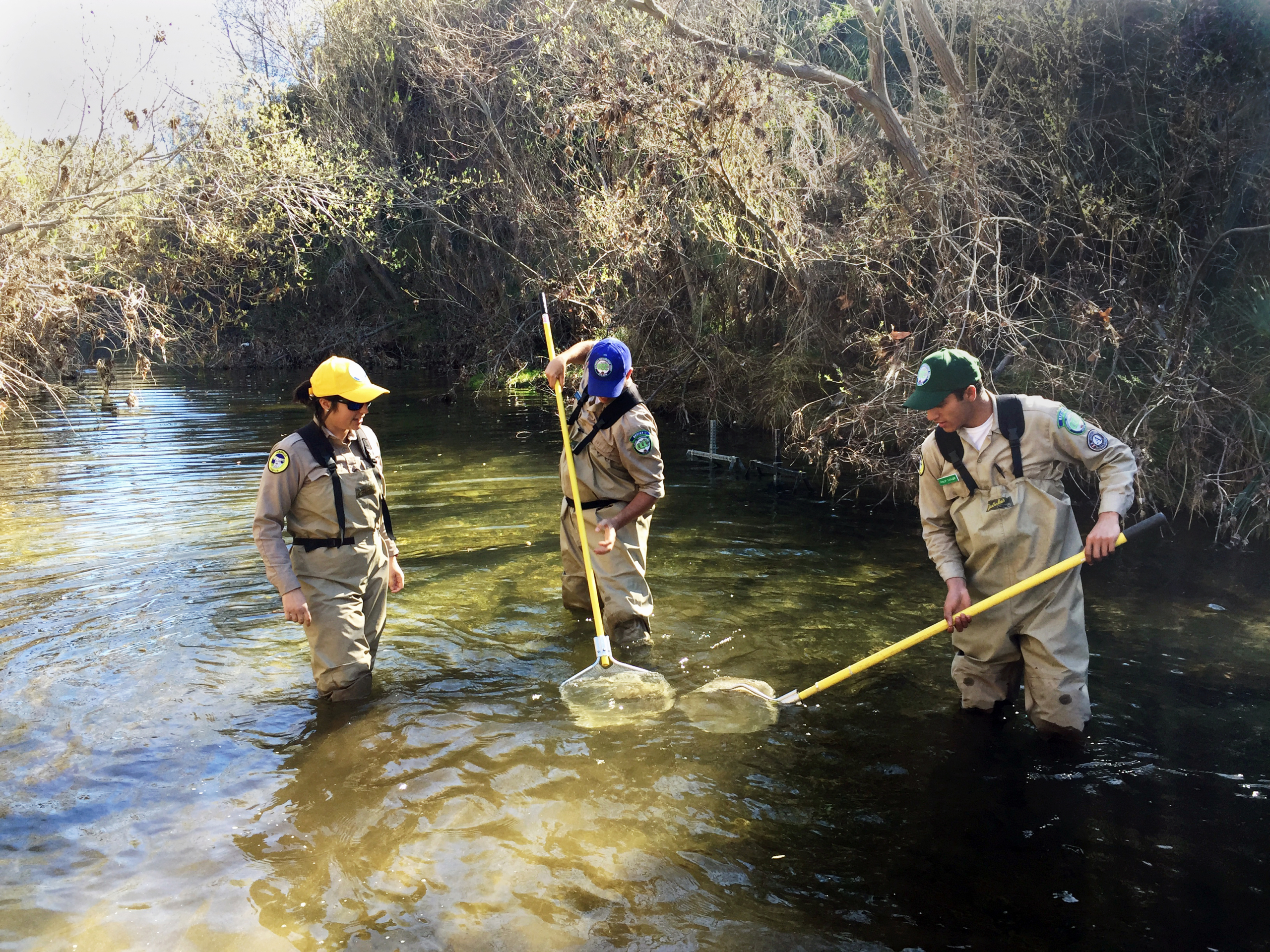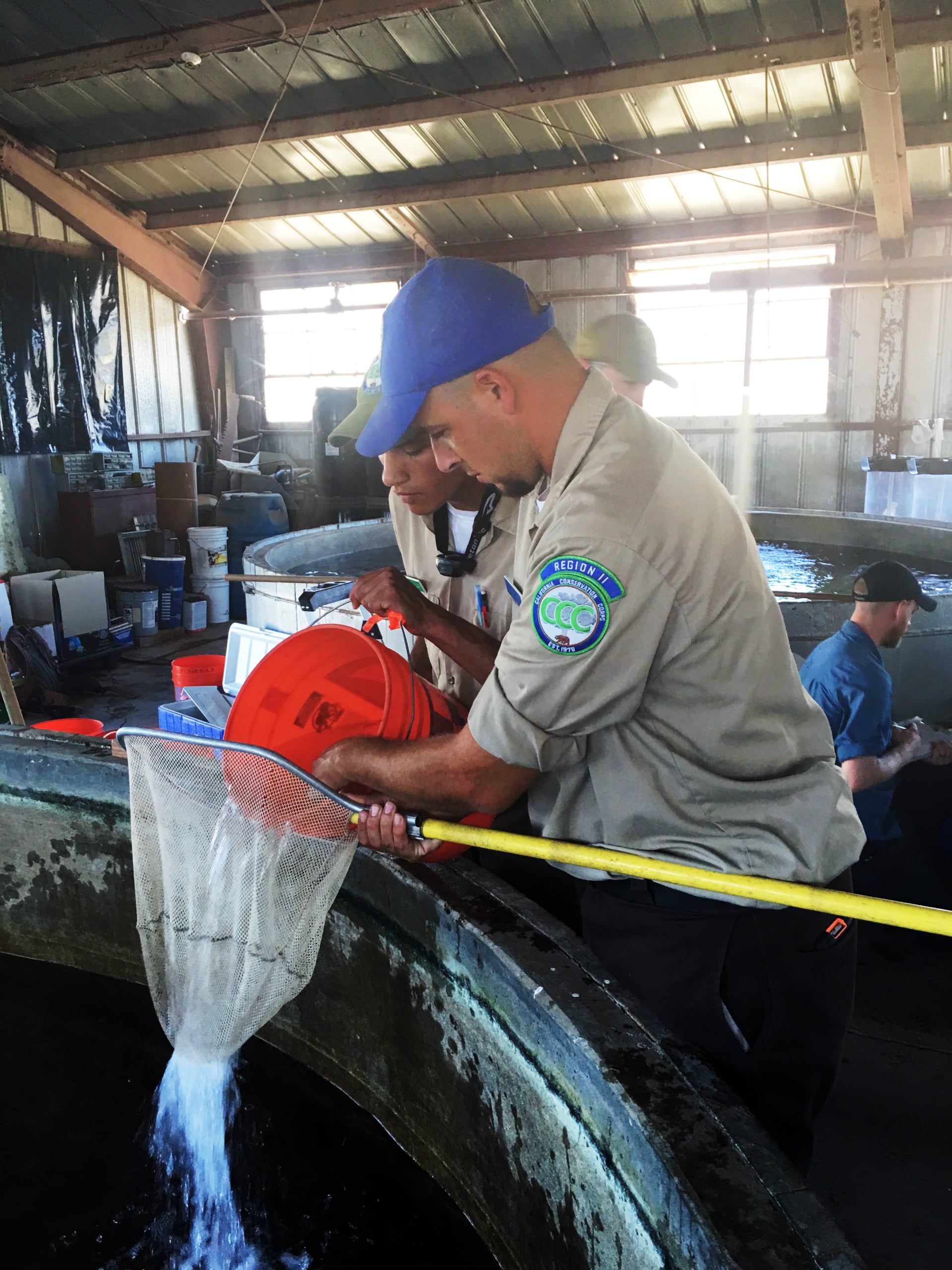
Corps play an essential role in helping preserve our waterways. In 2016 alone, Corps restored 2,551 miles of waterway.
We’re recognizing California Conservation Corps‘ and NOAA for their Veterans Fishery Program. Learn about how this partnership expands opportunities for Veterans and helps improve aquatic habitats.
 In partnership with the National Oceanic and Atmospheric Administration (NOAA) Fisheries, California Conservation Corps (CCC) Veterans Corps began their fisheries program in 2012. The program started in Northern California with hopes to expand to Southern California by 2014.
In partnership with the National Oceanic and Atmospheric Administration (NOAA) Fisheries, California Conservation Corps (CCC) Veterans Corps began their fisheries program in 2012. The program started in Northern California with hopes to expand to Southern California by 2014.
The goal of the program is to address two national priorities: 1) support and promote job opportunities for veterans; and 2) protect and restore endangered species.
The Veterans Corps fisheries program is unique from other Veterans Corps in that it provides post-9/11 veterans opportunities to build their skills and gain work experience by restoring habitat for endangered salmon and steelhead. The Corps participants conduct research and monitor the species in their natural habitats. Many other Veterans Corps programs across the country focus primarily on forestry work and wilderness firefighting.
Due to low funding and limited staff, NOAA Fisheries depends heavily on the CCC Veterans Corps to aid in salmon and steelhead recovery. Veterans are mentored by the California Department of Fish and Wildlife (CDFW), Pacific States Marine Fisheries Commission (PSMFC), the U.S. Forest Service, and local non-profits. Veterans and partners work on improvement projects identified by NOAA’s Fisheries’ salmon and steelhead recovery plans and gain knowledge about the complex needs of aquatic habitats.
Since 2013, veterans have assisted with 133 restoration projects. Veterans constructed temporary fishways at the mouths of 20 tributaries, allowing threatened salmon access to cold water within the Klamath River; constructed off-channel habitats to provide crucial overwintering habitat for coho salmon; and deconstructed and modified fish passages to allow endangered southern California steelhead access to upstream spawning habitat.
“Collectively, all the Veterans within this program have surveyed more than 423 miles of stream for juvenile fish and more than 2,122 miles of stream for spawning adult fish. They have also assessed 122 miles of stream habitat,” said Dana Howard, CCC Communications Director. “This monitoring helps guide future management and restoration decisions that will pave the way for species recovery.”
Through the partnership between NOAA and the CCC, veterans receive on-the-ground training and have the chance to work side-by-side with fisheries biologists and experts. With this knowledge and experience, veterans have a stake in the competitive work pool and can find permanent employment in environmental and natural resource fields.
NOAA and CCC credit veterans and the environment as “two of the nation’s most valuable resources.” Howard states, “By providing the training and skills necessary to pursue a career in the natural resources, this program helps young veterans transition to civilian life and continue serving our country in a way that also fills a critical need for improving our fisheries and watersheds…Veterans gain skills by developing real-world experience in natural resources fields encompassing fisheries biology, habitat restoration, project development, and many other areas. In addition, veterans in the program are eligible to receive college tuition and a $5,000 AmeriCorps education award.”
The Veteran Corps is currently searching for funding and partners to continue sustaining the program, not only for the environment but for the veterans as well. Over a 10-year period, NOAA and CCC hope to
establish secure funding for the program totaling $4.4M, or $440,000 per year, to employ 12 veterans annually. With this effort, placement sites would be at CCC centers throughout the state.
NOAA and CCC have discussed expanding the program throughout California to areas including California’s Central Valley and the area between Mendocino County and Monterey County, as well as further south into southern California.





































































